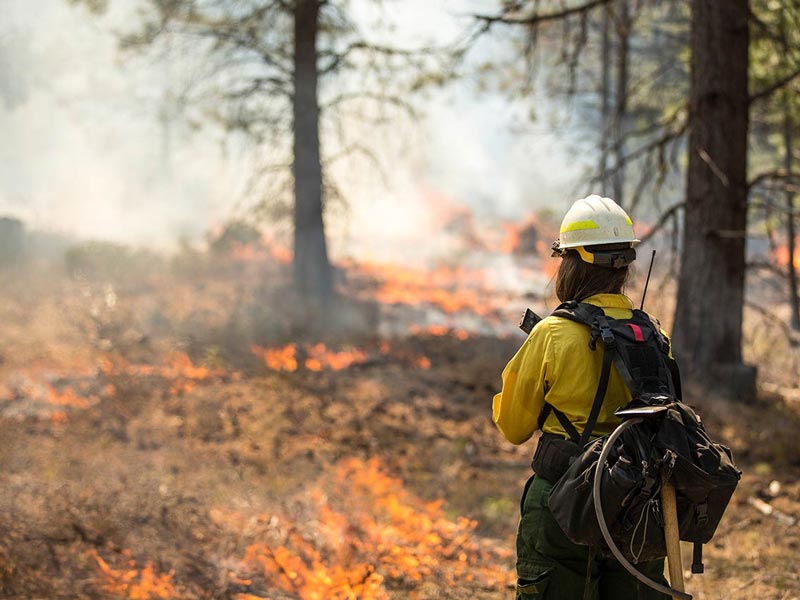- Insurance resources
- Home Insurance Resources
- Wildfire preparation checklist
Wildfire preparation checklist
Fire can move incredibly fast and cause devastating damage. Getting your home prepared for a wildfire or housefire can make a difference.

Prepare your home
- Make sure your address number on your mailbox or house are at least four inches tall against a contrasting background and is visible for at least 150 feet in all directions. This is so your home can be easily located by emergency officials.
- Remove vegetation around your home and chimney. Prune tree branches to 10 feet above the ground, and regularly mow your lawn and remove debris.
- Install smoke alarms in every room.
- Install a fully-charged fire extinguisher on each floor of the house.
- Keep a garden hose that's long enough to reach all areas of the house, and be ready to fill garbage cans, tubs, or other large containers with water.
- Have a ladder nearby that's tall enough to reach your roof so you can check for hot spots and wet it to prevent flying embers from igniting.
- Store anything combustible or flammable, like gasoline or liquid propane gas, in approved safety containers well away from the house.
- Regularly remove leaves and other debris from gutters.
- Move potentially combustible items such as lawn furniture, umbrellas, tarp coverings, and flags away from the house.
- Clear any combustible materials such as mulch, vegetation, construction materials and move any sheds from within five feet of the house.
- Stack firewood at least 30 feet away from any structure.
- Ensure that the dampers in your chimney and stovepipes are working and cleaned annually. Consider equipping your chimney and stovepipes with a spark arrester approved by the National Fire Protection Association.
- Install quarter-inch mesh screens on vents; louvers; entrances to attics and crawl spaces; and beneath decks, porches and the house itself (if it is not on a solid foundation).
- Make copies of all important documents (passport, driver's license, birth certificate, financial documentation, auto registration, property deeds, will, etc.) and keep copies with your out-of-area contact.
- Create an organized photo catalog of your belongings on your smartphone.
What to do after a fire
- Wear a NIOSH (National Institute for Occupational Safety and Health) certified respirator and wet any debris down to minimize exposure to dust particles.
- Don't use any water that may have been contaminated to wash dishes, brush teeth, prepare food, or to make ice or baby formula.
- Check the roof and attic immediately for any hot spots, sparks or embers.
- Continue rechecking the house and yard for burning embers for at least 12 hours.
- Document any damage to your property for insurance claims purposes.
Related content
Begin your free online quote
Please note: Information presented on this page is intended to be general information about insurance and is not specific to Liberty Mutual policies. Policies and coverages vary by state and insurer. Contact your insurance company to understand specifics regarding your policy and coverages.